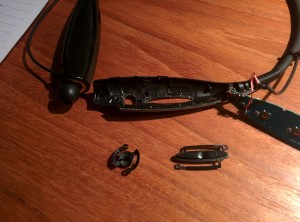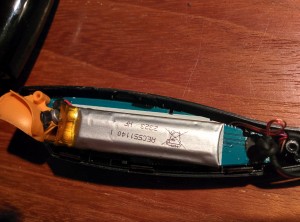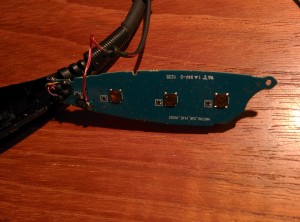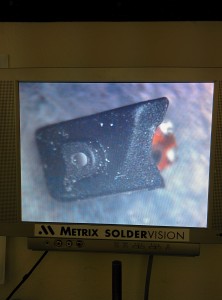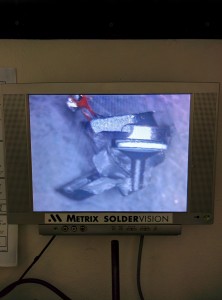My father, when he was dealing with diabetes, also was overweight. That became kind of a big deal as his health faded. He kept trying to lose weight by exercising. He spent five years doing Tae Kwon Do with me (we got our black belts together), then kept up a pretty regular walking habit after that. I don’t think he ever lost any weight at all.
Since my dad’s death from diabetes and heart disease, I’ve been convinced that if he’d only tried a bit harder he would have lived longer. That if he’d dieted more or exercised more strenuously he could have lost weight, and then managed his diabetes better. This is kind of an upsetting opinion to hold, since it basically means that I’m blaming my dad for dying on me.
Good Calories, Bad Calories calls into question all of the conventional wisdom about obesity and weight gain. If the story in GCBC is right, then no amount of calorie restriction or exercise would have helped my dad. I find myself really wanting to believe it because it would mean my dad was a victim of poor medical advice, not poor self-control.
Low Calorie Diets Don’t Work
One of the most common findings in obesity research, according to GCBC, is that obese people tend to eat about the same amount as lean people. People who are obese aren’t overeating, at least not compared to non-obese people. Perhaps obese people just have different physiology than non-obese people, and need even fewer calories. If this was the case, then calorie restriction should lead to weight loss.
Not surprising to anyone, calorie restriction diets don’t work. There are a number of studies showing this fact. Ansel Keys even did a number of semi-starvation diet studies in which he reduced the calorie intake of subjects by a third or more. These subjects lost maybe 20 pounds, but also experienced other severe effects.
Subjects complained constantly of being hungry. They grew lethargic. They grew depressed. One subject in the study was enrolled in a psychiatric clinic halfway through because he was talking about hurting himself and others. Another subject actually did engage in self-harm near the end of the study.
The subjects didn’t even keep the weight off afterwards. Once the study ended, subjects ate as much as possible. When calorie restriction ends, people tend to eat until they have regained any lost weight and more. In several studies, participants who were later allowed an unrestricted diet complained that they didn’t feel full even after eating 8000 calories a day.
Several experiments on overfeeding have also been done. Subjects are given from 1000 to 8000 more calories per day than their standard diet. On these overfeeding diets, weight gain varies dramatically by person. Some people put on less than 10 pounds, others put on 30. After the studies end, subjects generally return to the weight that they had been at before the diet. This seems to indicate that diet by itself is not the most important factor in a person’s weight.
Standard calorie restriction dieting is not just ineffective, it also seems to be directly harmful to mental health.
Exercise Doesn’t Work
No studies have ever shown exercise can help reduce weight. A meta-study cited in GCBC estimated that, depending on type of exercise, weight can be expected to change by -3.2oz to 1.2oz. In other words, it may go up or down, but not by much.
I’m used to thinking of fast and slow metabolism being relevant to a person’s weight, but apparently this isn’t so. People who are overweight don’t just have more fat, they often have more connective tissues and muscle, which increases metabolism. The metabolism of overweight people tends to be higher than that of lean people, not lower. Furthermore, metabolic rates differ greatly between people even of the same weight. People of different weights may still have similar metabolic rates. So it seems that trying to raise metabolism by exercising won’t cause weight loss.
Low Carbohydrate Diets Often Work
Quite a few studies are described in GCBC that led to significant weight loss, and carbohydrate restriction was common among them all. Several studies were on diets of 800-1200 calories, mostly fat and protein. These were apparently pretty effective. Other studies were on unlimited calorie diets that limited carbohydrates to only 80 or 100 calories per day. These unlimited calorie diets were also effective at leading to people losing weight.
From the mid 1800’s to the mid 1900’s, it was apparently well known that low carbohydrate, high fat and protein diets would help someone to lose weight. It wasn’t until dietary fat became demonized for heart disease that it also came to be seen as the main cause of bodyfat. Several popular modern diets also subscribe to basically the same mechanisms, including the Atkin’s diet and the first stage of the South Beach Diet.
Interestingly, many of the larger studies on low carbohydrate diets didn’t work for everyone. Some studies had subjects that only lost weight if they ate no carbohydrates at all; some studies showed only half the people in the study lost weight. While low carb diets seem like the best bet for someone wanting to lose weight, they don’t seem like a sure thing.
Set Points
There’s a common theory that the body has a “set-point” for weight that it wants to stick to. No matter how you change behaviour, your body will try and stick to its set point. If you eat less, your body will try and do less and you’ll feel sluggish and tired. If you exercise more, your body will feel hungrier. So for an obese person to reduce their weight, the most effective thing to do would be to change that set point.
GCBC suggests that the set point is due to fat cells taking in energy at a different rate than they release it. Since fat cells support us between meals, we need enough fat to release energy for us when we’re exercising or not eating. If someone has fat cells that very easily release energy, they may need less fat in order to manage the between meal times. The opposite is also true; if someone has fat cells that have difficulty letting go of energy already absorbed, they may need more fat to release the required amount of energy over time.
According to GCBC, changing the amount of energy released by fat cells is as simple as changing how many carbohydrates you’re eating. If you eat a lot of carbs, it somehow messes with the system that allows fat cells to take in and release energy. Switching to low carb diets changes the set point, so you don’t even have to change the total number of calories you’re eating. This is a pretty cool system, so I’m going to save discussion of it for its own post.
If body weight is governed by a set-point that’s a function of diet, exercise, and biology, then that has a big impact on what kinds of diets and exercise people should do. Set point theory basically means that temporary diets or temporary exercise regimens (just until the weight is lost) are guaranteed to be a failure. Any weight a person wants to lose will require a permanent change in lifestyle.
Fat-Shaming Culture
“Theories that diseases are caused by mental states and can be cured by willpower are always an index of how much is not understood about the physical terrain of the disease.”
– Susan Sontag
Much of weight gain seems to be governed by hormones and genetics. Weight gain takes on a different character in men and women, as well as in different stages of life (childhood vs puberty vs adulthood). There also appear to be huge individual differences in how people put on weight that have nothing to do with lifestyle choices.
While a calorie may be a calorie, the human body is not a furnace. We don’t burn the food we eat for fuel, we break it down and convert certain molecules into other molecules for storage and metabolism. The body is better at doing this with different types of foods, and different people’s bodies respond differently.
The constant focus on the self-discipline aspects of obesity have created an environment in which, if someone is fat, they are automatically assumed to have personal failings as well. I’m a bit ashamed that it took a rebuttal of 50 years of medical advice to convince me to treat people with respect regardless of their size. Reading GCBC has drastically changed my mind about how much someone can affect their own weight through their behavior. I’m now much more comfortable with the idea that people who are overweight are not running down a path to destruction of their own volition.
That’s certainly the image I had of my father during the last years of his life. I had conceptualized his health decline as something entirely his own doing, which made it a lot harder for me to empathize with him in life or to deal with his death. After reading GCBC, I’ve gained the understanding that it wasn’t as easy as just making a simple dietary change or exercising a bit more. This new understanding has been crucial to me letting go of a lot of the sadness and blame that I’ve been feeling.

